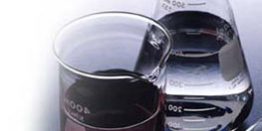University of Puerto Rico in 2003 completed its hundred years of history. In 2011 the Recinto Universitario de Mayagüez, better known as the RUM or College will fulfill its one hundred years of education. Close to a century of history is that the Department of Chemical Engineering held this year across its top 80 years of academic excellence.
Looking in our archives we found that in 1918 he graduated the first engineer of sugar, according to an industry long ago and at that time moved to Puerto Rico. This program has led to what today is chemical engineering. In 1925 the fall first two students to the program in chemical engineering, finishing his bachelor’s degree in 1930. Within the courses you took at that time were: Organic Chemistry, Heat Engineering, Manufacture Sugar, Sugar Analysis, Physical Chemistry, Chemical Engineering I, House Practice Sugar, Sugar Calculation House, Sugar House Machinery, Industrial Organic Chemistry, Hydraulics, and Sugar Cane Production.
With the progress of the Puerto Rico sugar engineering program was transformed into the chemical engineering. In 1955 the first woman graduated from the Faculty of Engineering and two years later, in 1957, the first woman graduated as chemical engineer. Today days, nearly 70 percent of students entering high school and graduated in Chemical Engineering are female.
Between 1958 and 1970 the chemical industry accounted for more robust growth in the economy of Puerto Rico. The most striking development was in the petrochemical industry that had an investment of 500 million dollars during that period now equivalent to over 2.5 trillion dollars.
With the advent in 1959 of the Department Dr. Rafael Muñoz Candelario, called the Father of Modern Chemical Engineering in Puerto Rico, began a new era of chemical engineering. The teaching of chemical engineering in Puerto Rico was an evolutionary process for enable specialists in this field could meet the technical demands of a rapidly changing industry.
For the 1961-62 academic year had already changed the institutional policy of Chemical Engineering 3 years of basic and 2 years professional 2 years of a core of professionals and 3. Simultaneously had implemented a program of modern chemical engineering. Ente program had the following required courses: two thermodynamics applied to chemical engineering, was previously a single course and offered the Department of Mechanical Engineering, an event designed to transport fluid mechanics, two of plant design, a kinetic and catalysis, a seminar and a course on advances in chemical engineering.
The old emphasis on sugar technology was replaced by an intensive training in the areas of chemistry, physics, mathematics and engineering principles common to all operations at the chemical industry. The interest in studying chemical engineering rose dramatically. The enrollment between 1965 and 1970 increased almost 5 times. The need for a power bigger and better qualified and better physical facilities was imperative.

